Leonardo.ai The Digital Da Vinci Transforming Creativity in the Age of Artificial Intelligence
Introduction: A New Renaissance Begins
Centuries ago, Leonardo da Vinci painted masterpieces, sketched futuristic machines, and blended art with science in ways that left humanity in awe. His brilliance sparked the Renaissance, a period where creativity and innovation reshaped the world. Fast forward to today, we stand on the edge of another great transformation but this time, it is not just human hands holding the brush. Artificial intelligence has entered the studio, and among the brightest names in this new digital Renaissance is Leonardo.ai, a tool that some call the “Digital Da Vinci.”
Much like its namesake, Leonardo.ai is redefining how we think about creativity. It allows artists, designers, and dreamers to bring their visions to life faster and more vividly than ever before. From generating breathtaking concept art to producing professional-grade digital assets for games, films, and marketing, this AI-powered platform has opened the door to limitless imagination. But how did we arrive here? And what makes Leonardo.ai a true force in this new age of creativity? Let’s dive into the story.
Read More: From Garage Dreams to Global Icon The Untold Story of Apple’s Creation
The Rise of Leonardo.ai
Leonardo.ai emerged in a world where creativity often meets constraints. Artists face deadlines, resources are limited, and the demand for digital content is higher than ever. The founders of Leonardo.ai envisioned a tool that could remove these barriers, empowering anyone with an idea to turn it into reality.
Using advanced generative AI models, Leonardo.ai can create stunning visual content in seconds. What sets it apart from many other AI art platforms is its focus on usability for creators. Game developers can generate characters, props, and textures. Marketers can craft eye-catching visuals for campaigns. Writers can illustrate their stories with vivid imagery. The platform is more than just an art generator, it is a collaborative partner in the creative process.
Why Leonardo.ai is Called the “Digital Da Vinci”
The comparison to Leonardo da Vinci is no coincidence. Da Vinci was not just an artist but also an inventor, engineer, and visionary. Leonardo.ai mirrors that spirit by blending artistry with cutting-edge technology.
- Multidisciplinary Application: Just as da Vinci worked across art, anatomy, and mechanics, Leonardo.ai serves multiple creative fields, from entertainment and advertising to education and product design.
- Innovation First: Leonardo da Vinci was centuries ahead of his time, and Leonardo.ai pushes the boundaries of AI creativity in the same way.
- Democratization of Art: While the Renaissance made knowledge more accessible, Leonardo.ai makes professional-quality creativity accessible to all, whether you are a seasoned artist or someone who cannot draw a straight line.
Read More: MidJourney: Where Imagination Meets AI
Key Features That Set Leonardo.ai Apart
- Intuitive Interface: No complex coding or technical background required.
- Customizable Outputs: Fine-tune style, mood, and composition to suit personal or professional needs.
- High-Quality Assets: Perfect for gaming studios, filmmakers, and digital marketers.
- Collaborative Workflows: Teams can co-create, iterate, and experiment faster.
- Rapid Prototyping: Turn rough ideas into polished visuals almost instantly.
The Impact on the Creative Industry
The creative industry is undergoing a massive shift. Where once it took weeks or months to produce concept art, now it can be done in hours. This is not about replacing artists but amplifying human creativity. Leonardo.ai acts as a co-pilot, handling repetitive or time-consuming tasks, allowing humans to focus on storytelling, emotion, and originality.
Studios that adopt Leonardo.ai find they can reduce production costs, increase output, and experiment without the fear of wasting resources. Independent creators gain the ability to compete with larger companies, leveling the creative playing field in a way that feels very much like the democratization of art during the Renaissance.
Read More: Elon Musk Cyber Cab The Self-Driving Ride That Could Change Cities Forever
FAQs About Leonardo.ai
1. Is Leonardo.ai only for professional artists?
No, Leonardo.ai is designed for both beginners and professionals. Its interface is user-friendly, making it easy for anyone to bring their ideas to life.
2. How is Leonardo.ai different from other AI art tools?
Unlike general AI image generators, Leonardo.ai focuses on creative industries, offering specialized tools for gaming, digital design, and storytelling.
3. Will Leonardo.ai replace human artists?
No. Leonardo.ai is not a replacement but a partner. It accelerates workflows, reduces repetitive tasks, and provides inspiration, while humans remain the source of vision, emotion, and originality.
4. Can Leonardo.ai be used commercially?
Yes, users can generate assets for professional use, though licensing terms depend on the plan selected.
5. What are some real-world examples of Leonardo.ai in action?
Game studios use it for world-building and character design, filmmakers use it for pre-visualization, and businesses use it for branding and digital marketing campaigns.
Conclusion: Creativity Without Limits
From the brush of da Vinci to the algorithms of Leonardo.ai, the essence of creativity has always been about exploring the unknown and making the impossible real. Leonardo.ai represents not just a tool but a movement, a new Renaissance where technology and imagination walk hand in hand.
In this age of artificial intelligence, creativity is no longer confined by time, skill, or resources. With platforms like Leonardo.ai, anyone can dream bigger, create faster, and share their vision with the world. Perhaps if Leonardo da Vinci were alive today, he would be sitting in front of a glowing screen, smiling, and using Leonardo.ai to sketch the future.





Pingback: AI in Lip Reading Breaking Barriers for the Deaf and Beyond - Latest AI/Tech Info